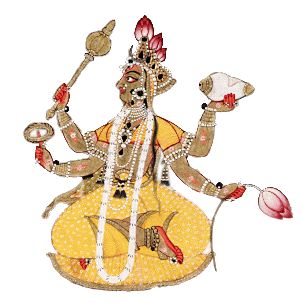Elementary Level Language Arts Activities for teaching Himalayan cultures and religions:These Language Arts activities assume that the class has been introducedto a social studies unit on Asia. These lesson plans show the applicationof Buddhist and Hindu beliefs through proverbs and also Jataka storiesthat teach Asian culture through the genre of fables.
| For further information on Buddhist beliefs click here. | For further information on Hindu beliefs click here. |  |  |
Proverbs and Quotes from AsiaProverbs are thought provoking sayings that are shared orally because theyrepresent some generally accepted truth. They can be powerful teachingtools when spoken at the right moment to underscore an important point.Proverbs are often shared from one generation to the next in the home. Children should be invited to think of proverbs they have been taught andlist them together as a class. Discuss the bit of wisdom that eachone teaches and imagine the story each proverb suggests.Then share the following quotes and proverbs from Asian traditions. Again, have students explore the insight that each carries. Theymay rewrite them in their own words. Finally, ask students what qualitiesand values of the Himalyan region do they think are expressed by theseproverbs and quotes. Words have no arows nor swords, yet they tear men’s minds to pieces.
Buddhist proverb While the rest of the world was busy exploring outer space, we Tibetanswere busy exploring inner space.
Tenzin Gyuatso, The Gourtheenth Dala Lama of Tibet Material objects are like clouds and mist; never think they mightlast.
Padampa Sargye Do not take lightly small good deeds,
Believing they an hardly help:
For drops of water one by one
In time can fill a giant pot.
Sutra of The Wise and The Foolish What makes an action good or bad?
Now how it looks, nor whether it is big or small,
But the good or evil motivation behind it.
Patrul Rinpoche To hide one lie, a thousand lies are needed.
Proverb from India Talk does not cook rice.
Chinese proverb There are no people a thousand years old
But there are words a thousand years old.
Mongolian proverb
Other sources for Proverbs:
Proverbs Are Never out of Season by Wolfgang Mieder (N.Y.: OxfordUnviersity Press, 1993.)
Too Many Cooks and Other Proverbs by Maggie Kien (N.Y: GreenTiger Press, 1992.)
Story Genre: Fables from Ancient India JatakaTales
Jataka tales are fables attributed to Siddhartha Gautama, the Buddha.Buddha is a Sanskrit word that means the enlightened or awakened one. The Buddha was a teacher of spiritual attainment in India between563 and 483 B.C.E. Some Jataka Tales were ancient oral stories atthe time that Buddha lived. These stories were told to illustrateconcepts such as compassion, a reverence for all life and an understandingof karma, or the laws of cause and effect. It is believed that Jatakatales mingled with fables of the West when Alexander the Great invadedIndia in 325 B.C.E. and Greeks translated some of the stories into theirown language. During the second century C.E.Hebrew fabulist RabbiMeir translated over 300 fables and 30 of them found their oway into theHebrew Talmud and Midrash. Christian crusaders during the eleventhand twelfth centuries brough Arabic versions of the stories back to Europe, Many Jataka stories were inaccurately creditied to Aesop by later writers of the Middle Ages.
These fables present people and sometimes animals who talk and act bothwisely and unwisely. Thus, they comment on social behavior. Sometimes unhappy things happen to foolish characters because of theirbehavior. Their unfortuante experiences point the way to wiser conduct. Volume1
Volume2 Book form
1. Jataka Tales: Fables from the Buddha by Nancy DeRoin (Boston: Houghton Mufflin Co., 1975)
2. The Hungry Tigress: Buddhist Legends and Jataka Tales by RafeMartin (Berkely, Calif.: Parallax Press, 1990) Video / Audio Tape / CD
Jataka Tales for Children: A Precious Life and The Magic of Patience
(Dharma Publishing: 1-800-873-4276) (www.dharmapublishing.com)
Copyright 2002
Activities: 1. Have students read several tales and make a poster, createa mini play or puppet show to share their favorite story with the class.
2. Have students create their own “Jataka style” fable for abehavior or decision making in their own life.
3. Compare these fables to those from other cultures for styleandcommon themes.
4. Writing: Create a web:
Main Characters: then write a paragraph describing each; compareand contrast the chacters.
Sense Experiences: from the main character’s point of view: placethe conflict in the middle of the web and write what the character sees,hears, feels, smells and tastes.
Conflict: describethe conflict in the center, record varioussolutions for solving the situation.
5. If you use a version of the stories that are illustrated,use the pictures to have students describe the environment, animals andthe way people live., How the are things similar or different fromtheir environment?
6. Start a class bulletin board. Display key value wordsfor each story the class reads. Have a map of Asia to make vividcultural background sections for each area of Asia. Include animalhabitats, holidays, geographical features. Add categories appropriateto your grade level. Activities adapted from:
Jataka Tales
Teacher Resource Guide Grade 1-6
Introduction to Asian Culture and Traditions
Dharma Publishing, Berkeley, CA 94704
| 
